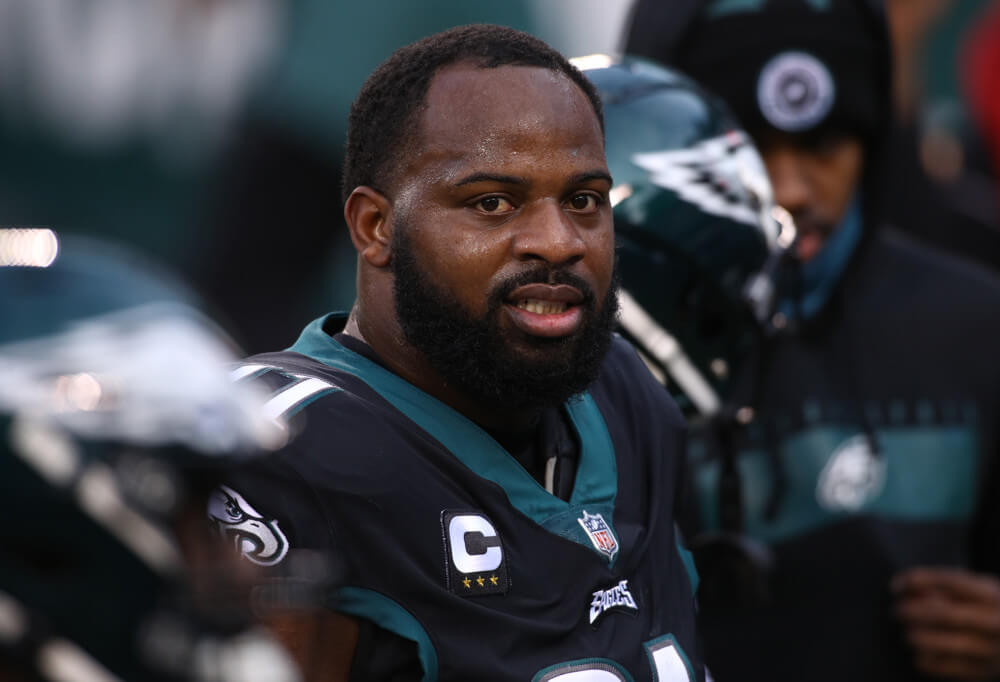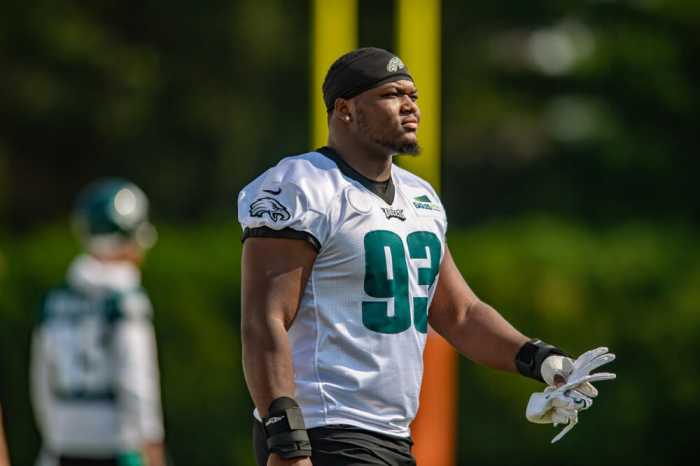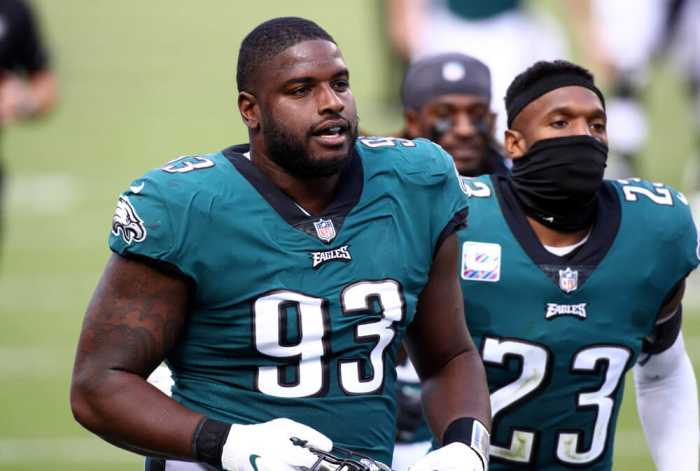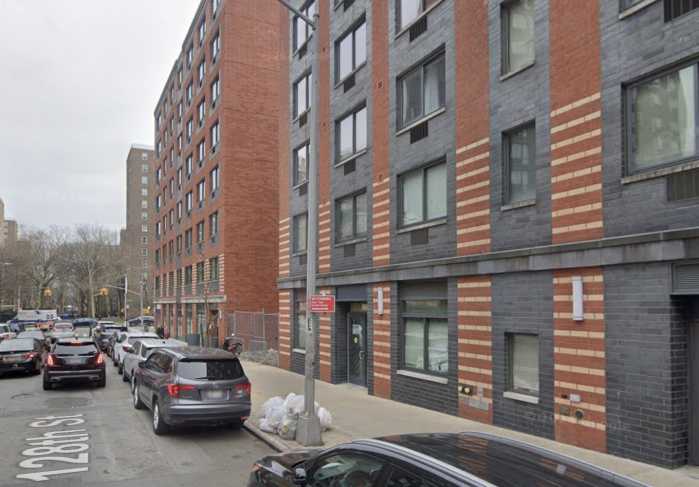A dark horse to even make the playoffs, the Eagles face a tough test in their Wildcard matchup with the reigning Super Bowl champs, the Tampa Bay Buccaneers. Just like Philadelphia’s last playoff showdown with Tom Brady, this game is likely to be decided by the offensive firepower on both sidelines. Tampa Bay’s defense has not been the same group that carried the team to a Super Bowl last season, but they have all the same key players in house and could be just as dangerous as they once were. Therefore, the key to the Eagles’ success may just be in the hands of their tumultuous defense.
There are glimmers of hope in that premise. Over the last 10 games, the Philly defense has held opponents to just 206.4 yards passing and 81.3 yards rushing per game. In that span, they have accumulated 17 sacks and forced opposing quarterbacks into a 9:6 touchdown to interception ratio. Away from home, the Eagles have held opponents to just a 34.23% 3rd down conversion rate — which is 4th in the league. However, statistics generally get thrown out the window when Tom Brady enters the equation.
Philadelphia did hold Brady to just 297 yards passing, 2 touchdowns and one interception in their meeting earlier this season. The team did an admiral job of keeping the tandem of Chris Godwin (IR) and Mike Evans contained, holding them to 7 receptions for 70 yards total. However, it was Antonio Brown (Free Agent) that led the Bucs in receiving. Brown, in combination with Leonard Fournette’s 81 rushing yards and 2 touchdowns, carried Tampa Bay to a victory, despite the game being much closer than most had anticipated.
It seems if Fournette will play this Sunday, despite heading to the IR list in Week 15. That will be a major boon to an offence that has been dropping like flies over the last few weeks. Still, even with all the missing players, it’s fair to say that most people are counting the Eagles out of Sunday’s game.
Nevertheless, no playoff team should ever be overlooked, and Philadelphia is oh so used to being an underdog this time of year. If they are to keep paces with the Tampa Bay offense, the Philly defense will have to bring their best. Here’s what it will take to slow down Brady and the Bucs:
Slow Down the Run Game
It’s no secret that Bruce Arians and the Buccaneers are proud supporters of the pass-first offence. They have the highest pass rate in the NFL (66%), and are tied for the highest success rate in the NFL on pass plays (Sharp Football). However, that number is drastically lower on first down (52%). In order to keep the offense on track, Tampa Bay loves to run the football on first down. They will generally do so out of their base formation, in order to keep the defense thinking pass. The Bucs have actually been better running out of 3 WR formations (63% Success Rate) than heavier sets (48% Success Rate). They also have a much higher run rate on third down, particularly on third and short (71% Success Rate, 81% Power Success Rate). For those keeping tallies, those are both 1st in the NFL.
In general, Tampa Bay doesn’t do a lot to disguise their plays or hide their intentions. The same can be said for the run game. They run it up the middle at one of the highest rates in football (57%), and they often double team at the point of attack. They rarely run off-tackle, although that changed slightly with Fournette missing time late in the season. However, the team is certainly capable of busting a run on the outside. Particularly, the Bucs average 5.42 yards per carry when running the ball off-tackle to the left (Football Outsiders).
All this is to be said that the most important factor to slowing down this rushing attack — and this cannot be overstated — is tackling. Tampa Bay averages just 0.7 open field yards (12th in the league). That’s fairly dreadful considering just how talented their backs are. They also have the 25th lowest explosive rush rate in the NFL (10%). The Buccaneers run game is much more of a war of attrition, picking up yard after yard when needed. Needless to say, the last time the Eagles played the Bucs, Leonard Fournette reminded Alex Singleton multiple times exactly why he was a first round pick back in 2017.
The Eagles have certainly improved their tackling after leading the league in missed tackles at the halfway point, finishing 10th in total missed tackles. Much of that came with TJ Edwards’ ascent in the pecking order. Still, tackling Fournette and Ronald Jones Jr. is always easier said than done and the Eagles cannot afford to allow any extra yards on broken tackles, especially on first and third down. Keeping the Bucs in third and long situations will be paramount, their third down run success rate (71% as mentioned above) is much higher than their pass success rate (42%) (Sharp Football).
Although they haven’t seemed like a good rush defense, the Eagles sit at 5th in yards allowed per carry and 9th in yards allowed per game. Their defensive line has been middling overall against the run, but fare best when opponents target the middle of their defense (4.27 Adjusted Line Yards, 16th). It will be a battle of strength on strength if the Bucs decide to ride with Leonard Fournette.
Clog Up the Middle
While the run game will play a major role in Sunday’s matchup, it’s clear as crystal that Tampa Bay will do most of its damage through the air. The key to slowing down Tom Brady and the Buccaneers passing attack is creating chaos in the middle of the field. Just like in the run game, Tampa Bay has hung their hats on dissecting a defense from the inside. The Eagles will have to be sound in the interior if they are to stay in the game on Sunday. This is true for the defensive line and for coverage.
Defensive Line Pressure
The blueprint for making Brady uncomfortable has always been to create pressure up the middle of the field. Against Tampa, that is easier said than done. They have allowed the fewest sacks all season (23), and lead the league with an incredible 3.5% sack rate (Football Outsiders). The Bucs also lead the league in pressure rate allowed (10.6%), and have allowed only 28 hurries all season (3rd) (Pro Football Reference). However, the caveat here is that Brady is only afforded 2.1 seconds to throw the football on average, which is tied for second worst in the league. In Tampa, as it did in New England, the ball comes out quick, which is much more difficult to do when there is pressure in the quarterback’s face.
The New Orleans Saints defensive line was able to wreak havoc against the Bucs this year, resulting in two upsets. They were able to create pressure on approximately 30% of Tom Brady’s drop backs, a season high for Tampa Bay (Next Gen Stats).
Luckily for the Eagles, they have two premier interior pass rushers in house — Fletcher Cox and Javon Hargrave. The defensive line has piloted the team to a 11.3% hurry rate (6th). That being said, the pressure rates we are used to seeing from Philadelphia have declined significantly (23.6%, 17th). Moreover, the defensive line ranks 26th in adjusted sack rate (5.5%). Josh Sweat has come on of late, registering 4 sacks over his last 4 games. If the Eagles are able to push the pocket in the middle, Sweat and Derek Barnett stand to gain on the outside.
That is a big if, against the best pass blocking offensive line in football. The Washington Football Team, who handed Brady & Co. a surprise loss early in the season also had success sending an extra defender up the middle. It worked especially well when disguised as a cross or delayed blitz. With Jonathan Allen commanding a double team, just as Cox should, there is plenty of space for a linebacker to capitalize. Genard Avery, who has come into his own as a situational pass rusher, could see some play in that role this weekend. However, Jonathan Gannon will have to ratchet up the team’s 15.5% blitz rate (31st).
Coverage
In coverage, the key to victory will be taking away Brady’s options over the middle and forcing him to throw towards the sidelines. Mike Evans and Rob Gronkowski, the team’s top two receiving options are both big bodies who love to seek out contact over the middle.
Below is the passing chart from the Eagles’ matchup with the Bucs earlier in the season. Jonathan Gannon’s strategy all season has been to take away the deep ball, which is the best approach for handling the Tampa Bay offence, which ranks first in the NFL in explosive passing plays (70) and yards off of explosive plays (713). However, this will depend greatly on the Eagles’ safety play. Per PFF, Rodney McLeod (63.7 grade – 48th), and Anthony Harris (61.6 grade – 54th), are one of the worst performing safety tandems in the league, although both have been playing below their standards in 2021. The Birds will need both to be at their best come Sunday in order to limit the Tampa passing attack.
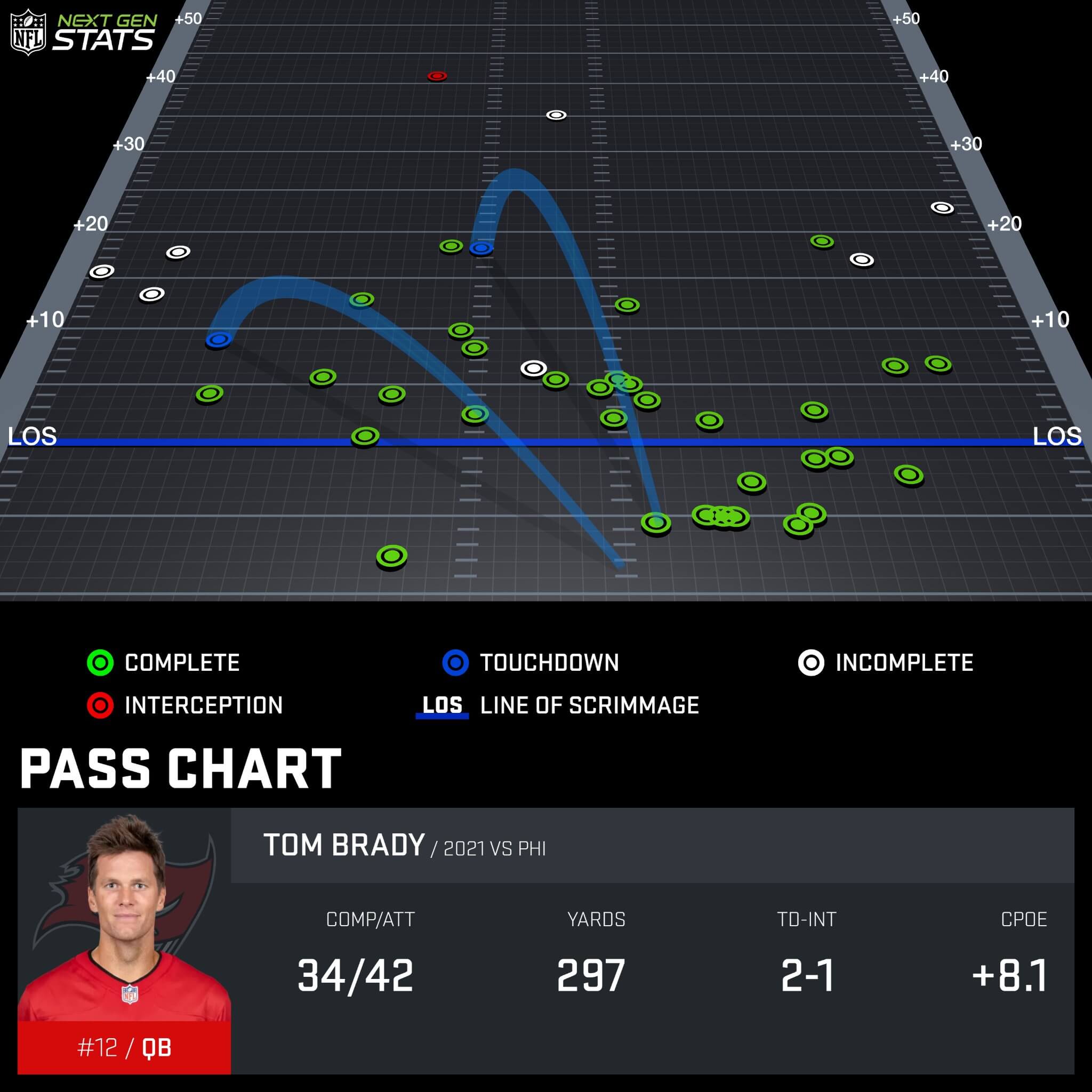
Two teams that had success against the Buccaneers this season, the Washington Football Team and the New Orleans Saints deployed different approaches for clogging up the middle of the field. The Washington Football Team has a deep rotation of safeties, all of whom are fairly versatile in where they can line up. Out of their base 4-2-5 formation, they showed multiple looks to keep Brady guessing, although mostly reverted to a Cover 2 shell to prevent anything deep.
The Saints, similar to the Eagles’ former defensive scheme, generally play with a single high safety and the other down in the box, with a Cover 3 Zone in behind. Obviously, having a dedicated player over the middle makes it harder to pass in that direction, resulting in plays like the one below:
It’s unlikely that Gannon will show many single high looks, but we could see more Cover 1 looks from McLeod and Harris. Having a safety man the middle hook to curl zone would free up a linebacker to blitz, as discussed above. Even still, Gannon’s base two high shell should serve its purpose for a bulk of what Tampa wants to throw at the Eagles. It would allow Darius Slay to follow Mike Evans for most of the game. In single coverage, Slay leads the league with just a 25.4 QB rating allowed. In any type of coverage, he is PFF’s 5th graded corner.
Guarding Gronk
The biggest problem for the Eagles in the passing game will likely be Rob Gronkowski. He has totaled 252 receiving yards on 14 receptions over the last two weeks, and we all know what the combination of he and Tom Brady have been able to accomplish in the playoffs. Again the key will be to take away the middle of the field. In his game against the Jets, Gronk did most of his damage over the middle of the field.
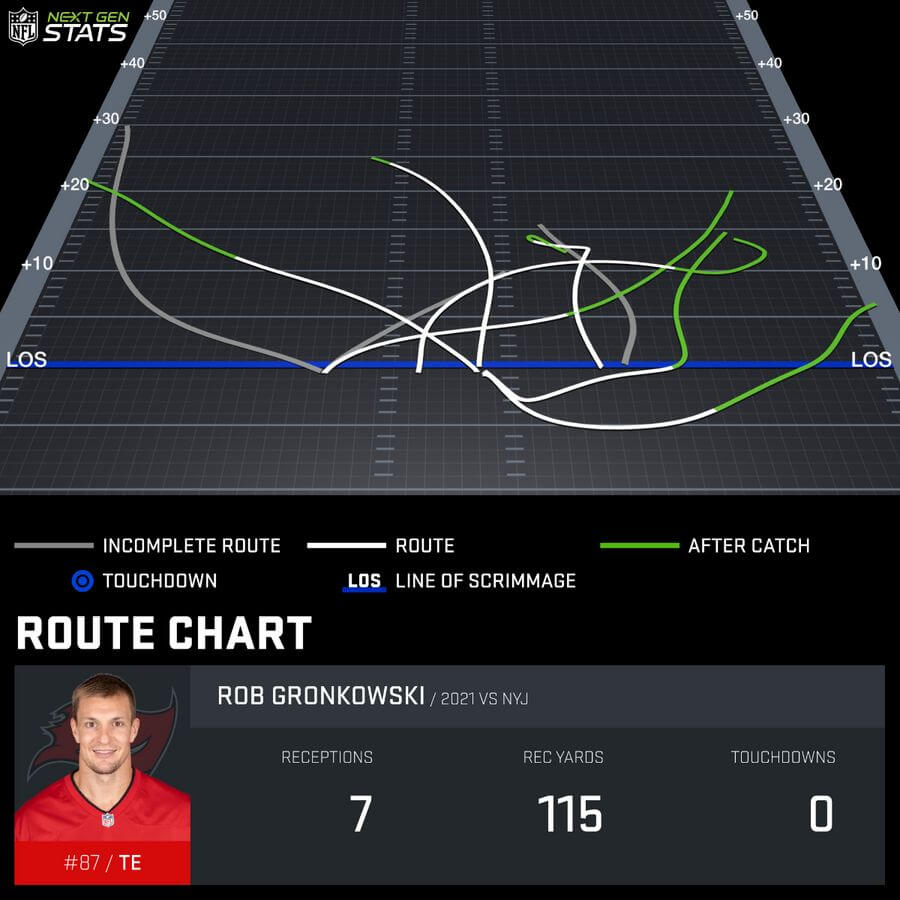
The Saints’ strategy was to blanked Gronkowski with former Eagle Malcolm Jenkins.
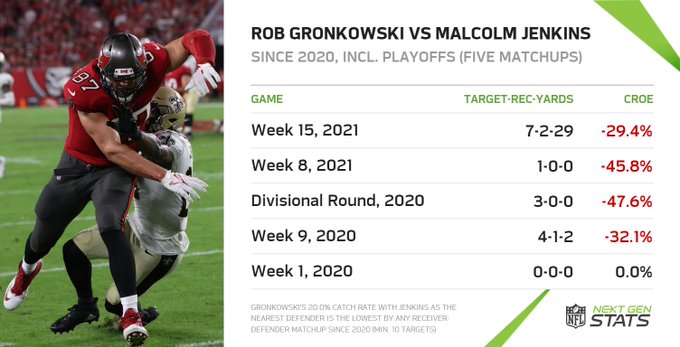
Unfortunately, the Eagles just don’t have a player in house that can stay with Gronk, nor the scheme to facilitate man-to-man coverage on both Evans and Gronkowski. The Eagles have allowed the most touchdowns to tight ends of any team, and rank 26th in yards allowed to tight ends (CBS Fantasy). Against the Eagles, tight ends are targeted at the third highest clip and the team allows more receptions than any other team in the league. Gronk didn’t play in the Eagles first match up with the Bucs, but the Birds still allowed a combination of O.J. Howard and Cameron Brate to secure 9 receptions for 75 yards and a touchdown.
The solution to shutting down Gronk — outside of clogging up the middle of the field — could be as simple as managing down and distance. Tom Brady, the smart quarterback that he is, generally targets the sticks on third down. He is 18th in the league in ALEX (Air Yards Less Expected) with 1.7 (Football Outsiders). Keeping the Bucs in third and long, while limiting their ability to convert on the ground, also makes the Bucs more predictable in the pass game. Their deep shots generally come on first and second downs, and on third down Bruce Arians dials up plays that give them the best chance at converting.
Mike Evans leads the Bucs in first down catches on third down, with 20 (9th in the NFL), and 75.7% of his total receptions result in 1st down. With Darius Slay likely following him in coverage, the Eagles are likely to bet on their best playmaker. They’d be right in doing so, as Gronk isn’t even in the top 20 in either category. Chris Godwin, who the Bucs will be without leads Tampa Bay receivers in receiving percentage. In fact, it is Leonard Fournette who leads the team in that regard.
All in all, in order to have a fighting chance, the Eagles will have to limit big plays on early downs, particularly in the middle of the field. When Tampa Bay is accordingly forced in to third and long situations, the coverage has to be tighter than we’ve seen from them for most of the season. Tom Brady is likely to target a receiver near the sticks in order to secure the first down. The Birds must limit Gronk as much as possible, and then shut down Mike Evans on third downs. If they can do that in coverage, and keep the Bucs ground game from getting their feet underneath them, they stand a chance.
Go Birds.
Photo by Kyle Ross/Icon Sportswire

